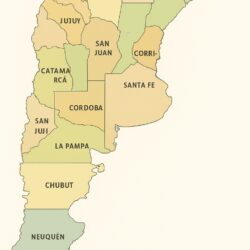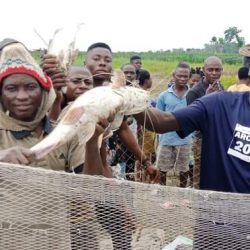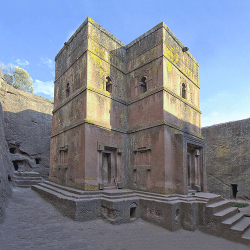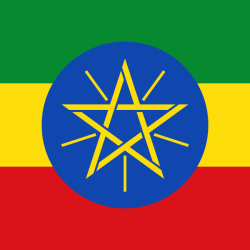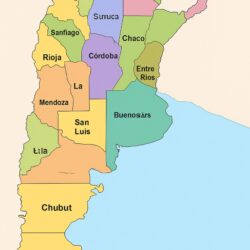Selk’nam, the Indigenous people of Tierra del Fuego, lived for 10,000 years as nomadic hunter-gatherers. Their history, culture, tragedy, and modern revival.
Who Are the Selk’nam?
The Selk’nam, also known as the Ona, are an Indigenous people who once roamed freely across the windswept plains, dense forests, and icy shores of Tierra del Fuego — the southernmost archipelago of South America. For nearly 10,000 years, they thrived as nomadic hunter-gatherers in a land they called Karukinka. Far from being a marginal society, the Selk’nam developed a rich culture, spiritual tradition, and social structure uniquely adapted to one of the most extreme environments on Earth.
But their story is also one of resilience against near-erasure. From thriving communities to the brink of extinction — and now, a fragile but determined revival — the Selk’nam remain a living testament to the endurance of cultural identity.
Ancient Origins and Homeland of the Selk’nam
Archaeological evidence shows that the Selk’nam people have inhabited Tierra del Fuego for millennia. Stone tools, camp remains, and hunting implements suggest a deep understanding of their environment. They followed migratory routes of guanacos, their primary food source, and navigated the seasonal changes with precision born of centuries of observation.
Karukinka, their homeland, was more than a physical territory — it was a living entity. Mountains, rivers, and winds carried spiritual meaning, shaping the Selk’nam worldview. Every part of the landscape was tied to myth, memory, and the presence of ancestral spirits.
Society and Social Structure
Selk’nam society was organized into garowen — kinship clans bound by blood, shared land, and mutual responsibility. There was no centralized political authority; instead, guidance came from elders and xo’on, who were spiritual leaders, healers, and keepers of sacred knowledge.
Social balance rested on cooperation. Roles were defined not by rigid hierarchy but by communal need. This structure allowed the Selk’nam to survive in an environment where survival depended on harmony with nature and with one another.
Beliefs, Spirituality, and Worldview
At the heart of Selk’nam spirituality were the hoen — ancestral spirits who shaped the world and continued to guide the living. Alongside them was the kaspék, an invisible force moving through the land, affecting seasons, health, and fate.
The Selk’nam did not see themselves as separate from nature but as part of a larger spiritual network. Rituals honored the spirits, sought guidance, and reinforced the bond between the living and the unseen world.
The Hain Ceremony: Rite of Passage into Adulthood
Perhaps the most famous Selk’nam tradition was the Hain — an elaborate initiation ritual for boys entering adulthood. For months, the community would gather in a large ceremonial hut, where masked figures representing powerful spirits enacted sacred myths.
The Hain was both a theatrical performance and a deeply spiritual journey. Boys underwent trials to test courage, endurance, and loyalty. The symbolic unveiling of truth — when initiates learned the identities of the masked performers — marked their transformation into full members of society.
European Contact and the Beginning of Tragedy
The 19th century brought profound disruption. European settlers, driven by the expansion of sheep ranching in Patagonia, encroached on Selk’nam lands. These vast ranches disrupted migratory patterns, depriving the Selk’nam of vital hunting grounds.
The newcomers saw the Selk’nam not as neighbors, but as obstacles. Ranchers accused them of killing sheep and placed bounties on their heads — with payment offered for the death of any man, woman, or child. Some campaigns were orchestrated with chilling efficiency, aided by local authorities and private landowners.
The Decline of Population and Cultural Loss
From a population of roughly 3,000 in the late 1800s, the Selk’nam dwindled to only a few hundred by the 1930s. Disease, violence, and forced relocation to mission settlements accelerated the collapse.
The missions — while providing refuge from outright slaughter — imposed European customs, suppressed language, and discouraged traditional practices. Songs, oral histories, and ceremonial knowledge began to fade as elders passed without apprentices to carry on their legacy.
Survival Through Adaptation and Memory
Despite these losses, fragments of Selk’nam culture survived in the memories of elders and in ethnographic records collected by anthropologists like Martín Gusinde and Anne Chapman.
Some survivors adapted by integrating into settler society while quietly preserving stories, songs, and rituals within families. Others spoke openly of their heritage, challenging the narrative that the Selk’nam were “extinct.”
The Revival of Selk’nam Identity
In recent decades, descendants of the Selk’nam in both Chile and Argentina have worked to reclaim their heritage. Cultural workshops, community gatherings, and artistic projects aim to revive the Selk’nam language, teach traditional crafts, and pass on oral histories to younger generations.
Museums and universities have partnered with Indigenous leaders to ensure that the Selk’nam story is told from within the community rather than solely through outside perspectives.
Legal Recognition in the 21st Century
In a landmark decision in 2021, Chile officially recognized the Selk’nam as an Indigenous people. This recognition grants them legal protections, representation in cultural matters, and the right to reclaim certain lands and practices.
While symbolic, such recognition also brings practical benefits — opening doors to government support for language preservation, heritage projects, and education.
Challenges to Cultural Preservation Today
Reviving a culture that has endured such trauma is no small task. The Selk’nam face challenges in:
- Language revitalization — only fragments remain, requiring careful reconstruction from archival sources.
- Oral history transmission — ensuring stories are passed authentically without distortion.
- Environmental changes — modern development continues to threaten sacred landscapes.
Despite these hurdles, the movement to keep Selk’nam culture alive grows stronger each year.
Why the Selk’nam Story Matters Globally
The Selk’nam experience is not unique — Indigenous peoples worldwide have faced similar patterns of colonization, displacement, and cultural erasure. Their revival offers hope and a model for cultural resilience, reminding us that heritage can be nurtured even after severe disruption.
By understanding their history, we also confront the legacies of colonial violence and the urgent need for cultural justice today.
FAQs About the Selk’nam
1. Are the Selk’nam extinct?
No. While their population was drastically reduced, Selk’nam descendants are alive today and actively reviving their culture.
2. What language did the Selk’nam speak?
They spoke the Selk’nam language, now considered critically endangered but subject to revival efforts.
3. What was the purpose of the Hain ceremony?
It was an initiation ritual marking the passage from boyhood to adulthood, blending myth, spiritual lessons, and social instruction.
4. Why were the Selk’nam targeted by settlers?
Settlers sought to clear land for sheep ranching and saw the Selk’nam as a threat to their livestock and expansion.
5. How is the Selk’nam culture being preserved today?
Through language reconstruction, cultural workshops, community events, and partnerships between Indigenous leaders and academic institutions.
6. Where can I learn more about the Selk’nam?
Resources can be found in works by Martín Gusinde, Anne Chapman, and through Chilean Indigenous heritage organizations.

The Enduring Spirit of Karukinka
From the icy winds of Tierra del Fuego to the modern fight for recognition, the Selk’nam story is one of resilience. Though nearly silenced, their voice still carries — in the songs reconstructed from memory, in the stories told by elders, and in the renewed pride of younger generations.
Karukinka’s guardians may have been scattered, but they are not gone. Their endurance is a reminder that even in the face of immense loss, identity can be reborn.




